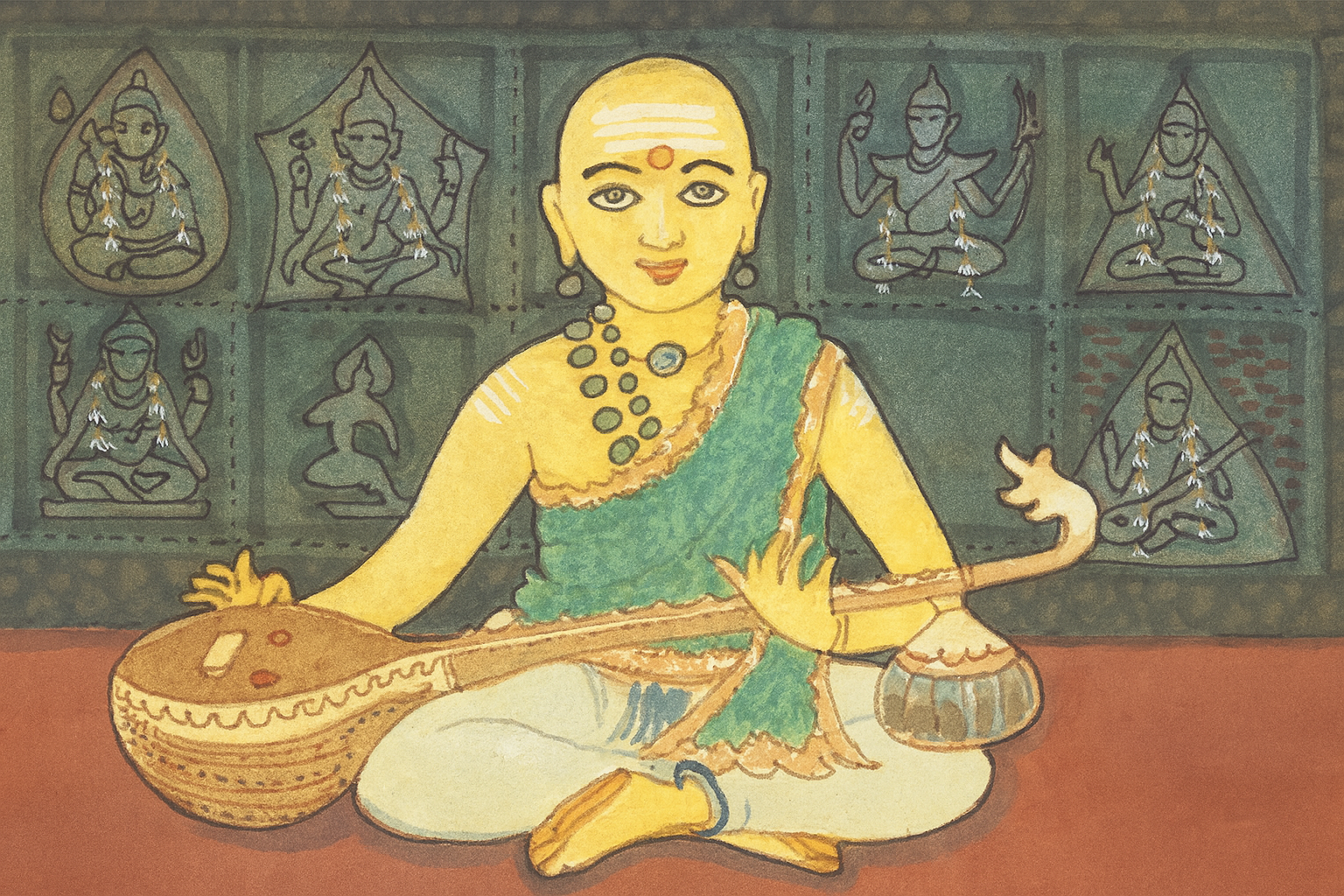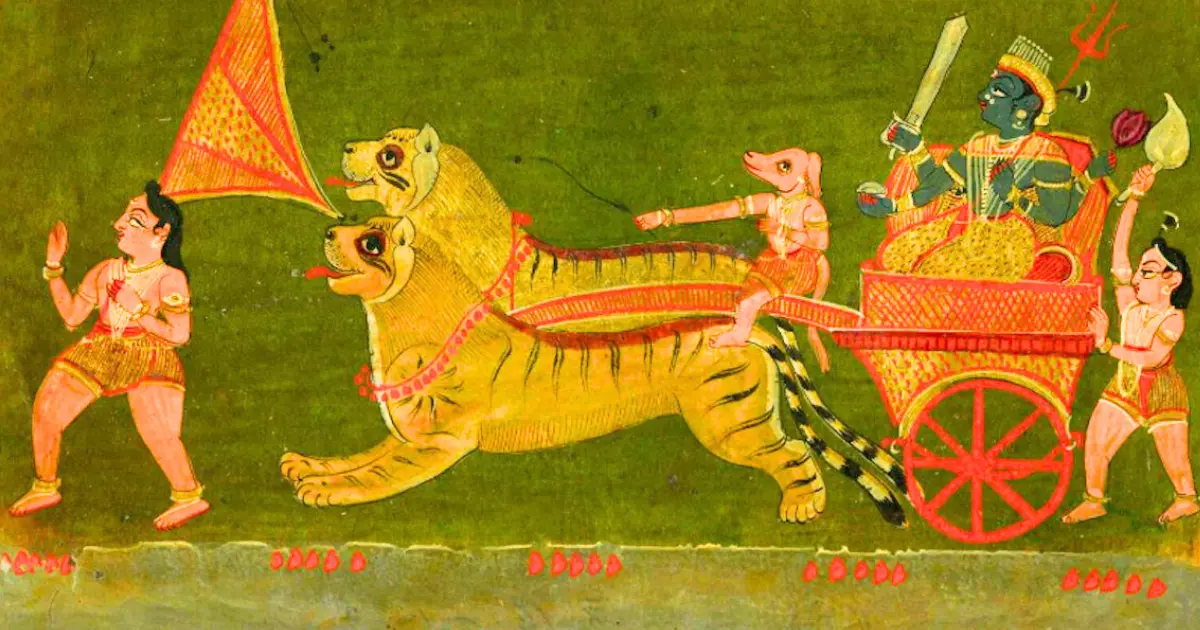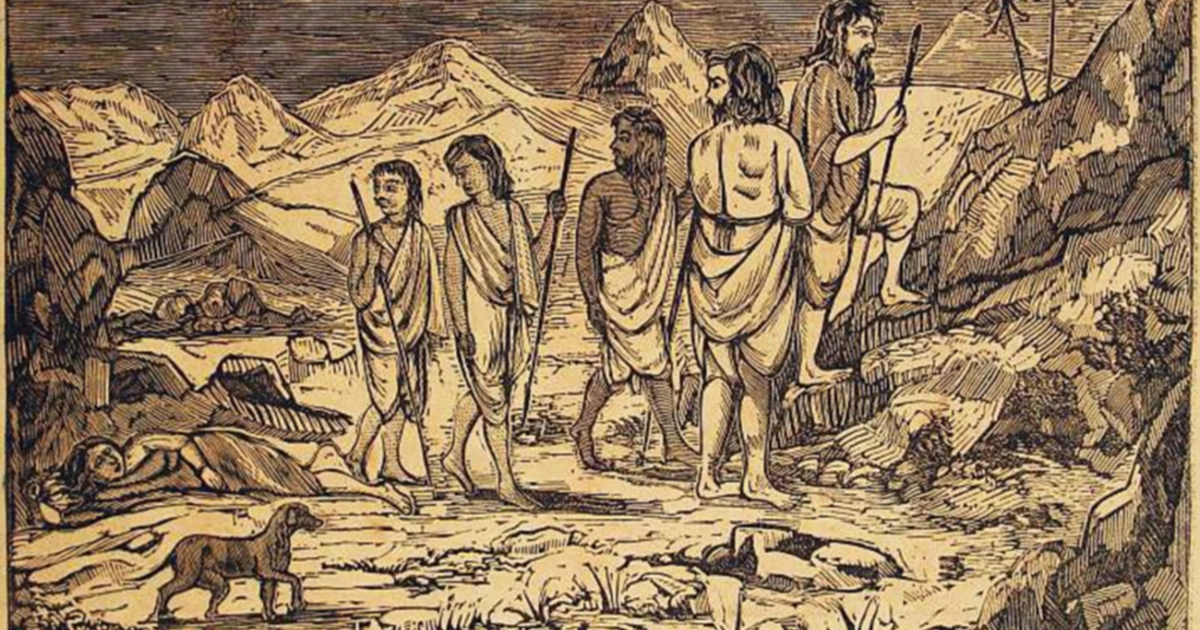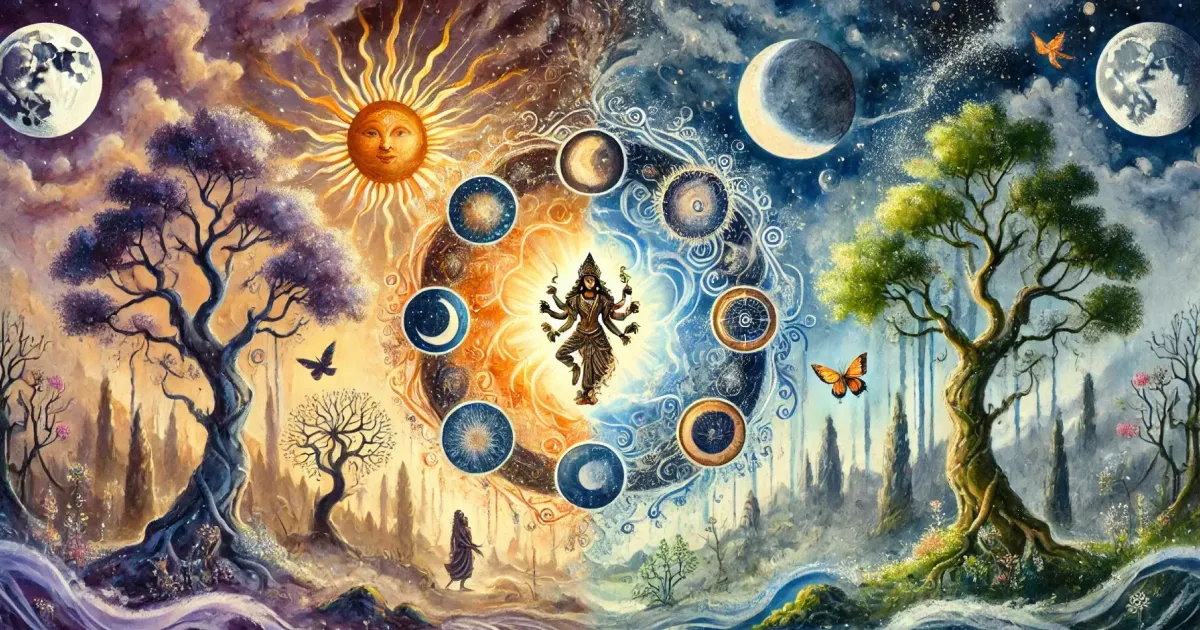A geocultural identity refers to the shared sense of culture, memory, and historical consciousness rooted in a specific geography. It is not merely defined by political boundaries but by lived cultural continuities—that encompass language, religion, myth, and spatial imagination. Such identities evolve organically over centuries — even millennia — and are anchored in sacred landscapes, pilgrimage routes, oral traditions, and civilizational memory. The idea of Bhāratavarṣa, therefore, reflects a form of collective belonging that transcends modern cartographic borders. These are cultural worlds, not political parameters, and they structure people's relation to time, space, and community — their very identity — in ways that are frequently non-statist and deeply embedded in place-based knowledge systems.
A beautiful embodiment of an integrated geocultural identity can be found in the life and work of Muthusvāmi Dīkṣitar, a vāggeyakāra (a composer cum lyricist) par excellence, one of the towering figures of Karṇāṭaka sańgīta and one of the hallowed Trinity alongside Tyāgarāja and Śyāma Śāstri. By treating space — both kṣetra and geographical features —as sacred and storied, he cultivated a geocultural identity that draws deep, invoking the purāṇa-itihāsa and emphasising a sacred Bhāratīya interconnectedness.
This is in contrast with the modern notion of a nation-state, which reduces space to a mere territory to be governed. In our contemporary moment, cultural and regional differences are politicized to deepen divisions. Dīkṣitar’s oeuvre compels us to rethink the prevailing paradigm, offering a resilient contrariety against disintegration. His life and music remind us that India’s unity has historically been forged not through centralization and forcible integration but through sacred interconnection, art and bhakti. The melding of Hindustāni rāgas into the Karṇāṭaka framework is more than just an aesthetic choice; it is a gesture of civilizational unity, admiration, innovation and a vibrant imagination.
At a young age, Dīkṣitar’s travelled to Vārāṇasi with his guru. His extended stay in Benares, where he immersed himself in Vedānta and music, provided him intimate access to the Hindustāni tradition. This exposure deeply enriched his compositional style. Dīkṣitar’s engagement with Hindustāni rāgas was not a mere act of replication but a profound internalization of their structure, emotive essence (bhāva), and aesthetic spirit. His approach reflected a deep, experiential understanding that allowed these rāgas to become an integral and organic component of his musical sensibility and vision. He internalized aspects of Hindustāni music such as elaborate ālāpanās and melodic ornamentations resembling meend (jāru in Karṇāṭaka music) — a type of gamaka —that lend a subtle gravitas to compositions like Akṣyaliṅga Vibho (in Śankarabharaṇam) and Balagopāla (in Bhairavi). His deep understanding of the rāgas extended beyond mere vocabulary; he revived and restored several Hindusthāni rāgas—which had evolved through southern adaptations—back to their pristine melodic form within the Karṇāṭaka framework. This is evident in his treatment of rāgas such as Brindavanasāraṅga *(Sarang), Yamunā Kalyāṇī (Yaman), Hameer Kalyāṇī (Hamir), and Dwijāvanti (Jaijaiwanti), where the Hindustani aesthetic shines through without compromising Karṇāṭaka identity.
For example, Jambupate is a distinguished composition of Dīkṣitar on Śiva is set in the rāga Yamuna Kalyaṇī, the Karṇāṭaka adaptation of the Hindustāni rāga Yaman Kalyan along with the borrowed Dhrupad style of elaboration which is measured and majestic. This composition is one of Dīkṣitar’s pañcabhūta kṛtis, which venerate Śiva’s manifestations as the five elements (pañcabhūtas); Jambupate specifically extolling the water (jala), paying homage to Jambukeswara of the Tiruvanaikaval temple near Trichy, Tamil Nadu.
Hindustāni influence is perceptible even in Dīkṣitar’s compositions set in traditional Karṇāṭaka rāgas, evident in the use of expansive openings and gamakas that approximate meend-like note transitions. Akṣayalinga Vibhō (in Śaṅkarābharaṇam) exemplifies this with its stately, contemplative pace evoking the ascetic stillness of Śiva. Bālagōpāla (in Bhairavi) captures the delicate charm of the child Kṛṣṇa through ornate melodic treatment.
Rather than resulting in hybridization or compromise, Dīkṣitar’s assimilation of Hindustāni elements enriched the Karṇāṭaka tradition from within, preserving its distinct identity. In doing so, Dīkṣitar expanded the expressive possibilities of Karṇāṭaka music and revealed to even the most orthodox ears the latent beauty these northern forms could embody within a southern classical framework. Even rāgas not directly adopted from the Hindustāni system reflect an unmistakable imprint of its aesthetics in his treatment.
Muthusvāmi Dīkṣitar stands as a striking example of a musical genius whose oeuvre bridges not just stylistic traditions, but geocultural worlds. His embrace of Hindustāni music and incorporation of its rāgas into the Karṇāṭaka idiom demonstrate more than just technical versatility—they represent a profound cultural synthesis rooted in a shared sacred geography and a civilizational continuity that transcends the confines of region and language. Such cross-pollination is not merely restricted to classical music or a single system of knowledge. It reflects a broader geocultural imagination—one that sees Bhārat not as a patchwork of discrete nation-states but as a unified sacred space animated by shared devotion, mythologies, and spiritual cohesion. Diana Eck’s conception of “sacred geography” is apt here. Eck argues that India’s cultural unity is not predicated on political or linguistic uniformity but on a network of sacred sites, pilgrimage circuits, and ritual practices that crisscross the subcontinent. Dīkṣitar’s music deeply reflects this. His compositions are often addressed to deities whose temples are spread across this sacred landscape: Viśveśvara, Viśālākṣi, Annapūrṇa, and Kāla Bhairava of Benaras, Kṛṣṇa of Guruvāyūr (Pāvanapuri), etc., while Hariharaputram in Vasanta invokes the Pāṇḍya and Kerala regions; other pieces praise the Gaṅga at Kāśi, and Paśupatīśvara at Nepal (who is described as being “Worshipped by the King of Western Kashmir”).
Two compositions of Muthusvāmi Dīkṣitar—dedicated to Lord Paśupatīśvara and Śrī Satyanārāyaṇa—are set in Śubha Paṅṭuvarāḷi (formerly Śiva Paṅṭuvarāḷi), a rāga aligned with the Hindustāni Miyan ki Todi. A similar Hindustāni imprint is evident in his use of rāgas like Sāraṅg (Brindāvani) and Mālkauṅs (Hindōḷam). Parimala Raṅganātham composed in Hamīr Kalyāṇi exemplifies the Hindustani mode of the rāga, with occasional inflections of Kedār. Jayajayavanti, adopted into Karnāṭaka saṅgīta as Dvijāvanti, is explored comprehensively in Ceta śrī bālakṛṣṇam, a composition widely regarded as the archetype of the rāga. Moreover, Dīkṣitar’s Vāsudevam upāsmahē in Mālava Pañcama — a rāga akin to the Hindustāni Basant with minor modifications — further attests to his nuanced assimilation of the northern idiom.
What Dīkṣitar offers, then, is a sonic cartography of India—a map in rāgas, mantras, and lyrics that spans its length and breadth. This integrative spirit has profound implications for national identity. Unlike the modern nation-state, which often demands homogeneity and borders to establish sovereignty, the geocultural nation imagined through Dīkṣitar’s music is inclusive, plural, and no less sacred. It thrives not on uniformity but on resonance—a resonance between North and South and between Sanskritic and vernacular, the deśī and mārga.
A sacred geography preserves civilizational memory, privileging rivers, temples, and kṣetras that link people through ritual, devotion and myth rather than through legal contracts and political boundaries. The nation-state constructs its legitimacy around compressed historical moments—revolutions, independence movements, constitutional adoptions—which, though significant, often lack the depth of emotional continuity and sacred resonance. In contrast, a geocultural identity, privileges mythic and sacred events—such as the birth of Kṛṣṇa, the vanquishing of Rāvaṇa by Rāma, or the descent of the Gaṅga—not as metaphors but as living realities that organize space, time, and collective memory. Through festivals, observances, pilgrimage circuits, rituals, music, literature, and oral traditions, a civilizational rhythm is formed that transcends historical chronology. While the nation-state seeks to unify through political rupture, geocultural identity weaves unity through the sacred act of remembrance. The legitimacy of the nation-state rests on the assumption of a singular national narrative, often constructed retrospectively, and enforced through mechanisms such as state education, linguistic standardization, and legal citizenship. The nation-state, in this sense, tends toward homogeneity, suppressing or marginalizing the multiple cultural affiliations that geocultural identities maintain. The very idea of the nation-state predicates a singular allegiance, demanding that layered identities be subordinated to a dominant national ideal. This becomes particularly fraught in post-colonial contexts, where modern states have inherited colonial borders that fail to map neatly onto older cultural geographies, leading to tension.
To study and perform Dīkṣitar today is to reaffirm this profound and transcendental unity. It is to remember that our musical traditions, like our sacred landscapes, are deeply interwoven. We must read, perform, and understand Dīkṣitar as a composer, a philosopher, a bridge between cultures and divergent musical traditions.
1. AKASHVANI: Vol. XL, No. 15 ( 11 MAY, 1975 ). N.p.: All India Radio (AIR),New Delhi, 1975. https://www.google.co.in/books/edition/AKASHVANI/Fa4IEAAAQBAJ?hl=en&gbpv=0
2. Venkatarama Aiyar, T. L.. Muthuswami Dikshitar. India: National Book Trust, India, 1968. https://www.ibiblio.org/guruguha/MusicResearchLibrary/Books-English/BkE-VenkataramayyarTL-MuttusvamiDiksitar-0098.pdf







